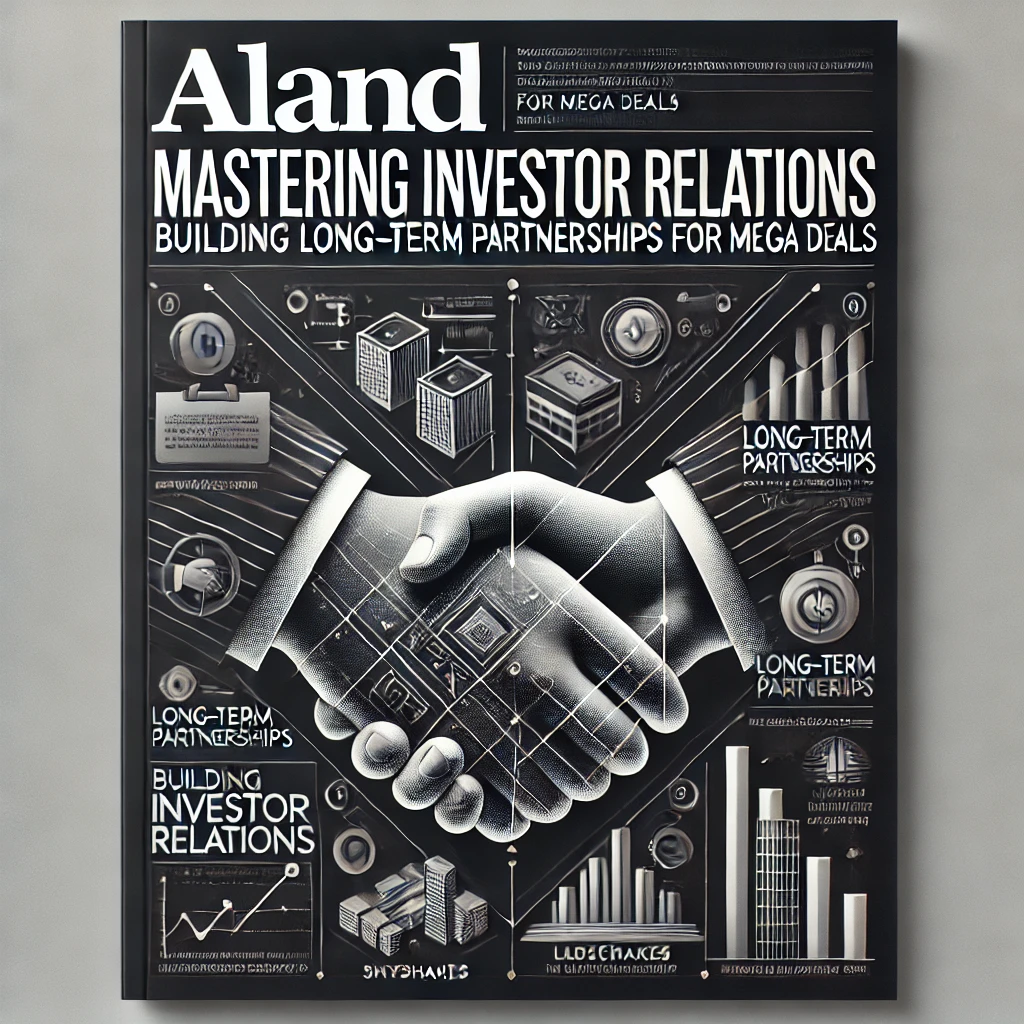Mastering Investor Relations: Building Long-Term Partnerships for Mega Deals
- Published Date: 9th Mar, 2025
-
5★ ★ ★ ★ ★(165)

In the world of mega real estate deals, securing the right investors isn’t just about capital; it's about cultivating long-term relationships that foster trust, transparency, and shared goals. Dr. Pooyan Ghamari’s expertise in global economics and investment strategies highlights the importance of mastering investor relations to not only attract significant capital but also to ensure sustainable growth over time.
Building strong partnerships with investors requires a strategic approach. It's crucial to understand their needs, risk appetite, and long-term objectives. This personalized focus ensures that both parties are aligned, fostering mutual growth. Real estate, particularly in the high-value, bulk investment sector, presents unique challenges, and cultivating trust with investors is vital to overcoming these hurdles.
1. Personalized Investment Strategies for Mega Deals
When structuring deals for bulk investors, the one-size-fits-all approach is rarely effective. Successful investor relations require the tailoring of investment strategies that align with each investor's specific objectives. Dr. Ghamari’s extensive background in global financial systems and international investment has shown that understanding the investor’s cultural and economic context is key.
For example, real estate investors from emerging markets may be more cautious about regulatory risks or market volatility, whereas investors from stable, developed markets may prioritize long-term returns and sustainability. A customized approach not only addresses these concerns but also shows investors that their priorities are at the forefront of the project’s strategy.
2. Trust Building Through Transparency and Communication
Transparency is a critical component of long-term investment relationships. The more openly you communicate, the more confident investors feel in their decisions. Keeping investors informed about the performance of their investment, any regulatory changes, and the project’s financial health is crucial.
Dr. Ghamari’s work emphasizes the need for robust communication strategies that go beyond quarterly reports. Real-time data sharing platforms like those offered by ALand provide investors with up-to-date market trends, real estate valuations, and financial performance indicators. These platforms also foster a deeper level of engagement and trust between investors and real estate developers, as they allow stakeholders to track investment progress as it happens.
3. Leveraging Cause-Related Marketing to Enhance Brand Image
Investor confidence can also be strengthened through cause-related marketing. The growing demand for companies to take social responsibility seriously means that investors are increasingly looking for projects that align with ethical values. Dr. Ghamari’s approach to branding suggests that cause-related marketing not only enhances a company’s image but also has a direct impact on the perception of risk in an investment.
By linking real estate projects to initiatives like sustainability, urban regeneration, or affordable housing, investors can feel that they are part of something larger than just a profit-making venture. Real estate developers who align their projects with societal goals can see an increase in investor interest and loyalty, especially among socially-conscious capital.
4. Diversifying Risk Through Innovative Financial Tools
In today’s market, diversification is one of the best ways to mitigate risk. Innovative financial tools, such as tokenization and blockchain, have revolutionized how real estate investors can engage in large-scale projects without exposing themselves to excessive risk.
Tokenization allows real estate developers to break down ownership into smaller, tradable units, offering investors a chance to purchase shares of high-value properties. This not only lowers the barriers to entry for smaller investors but also provides the flexibility to buy and sell assets in ways that traditional real estate investments cannot. This system promotes liquidity and transparency, creating a more attractive proposition for investors who may otherwise be hesitant.
Dr. Ghamari’s leadership in digital economy transformations aligns perfectly with this shift. He has consistently highlighted the role of blockchain technology in bringing liquidity to traditionally illiquid markets, including real estate. Platforms like EE Gold, which leverage cryptocurrency and tokenization, are opening new avenues for investment and are seen as the future of real estate investment, enabling both large-scale and individual investors to participate in global markets with increased security and efficiency.
5. Practical Steps for Building Investor Relationships
For corporations looking to strengthen their investor relations, several strategies should be prioritized:
- Develop a deep understanding of investor needs: Understand the long-term objectives of each investor and tailor strategies to align with these goals.
- Implement transparent communication practices: Use real-time platforms to share critical information and maintain open lines of communication.
- Integrate cause-related marketing into branding strategies: Invest in sustainability and socially responsible initiatives that align with investor values.
- Leverage new financial technologies: Use tokenization and blockchain to increase investment flexibility and reduce perceived risks.
For further reading and more detailed resources, visit the ALand blog, ALand Platform, EE Gold, and The ALand Times. These platforms provide expert insights and tools that can help you optimize investor relations and drive long-term success in mega deals.

